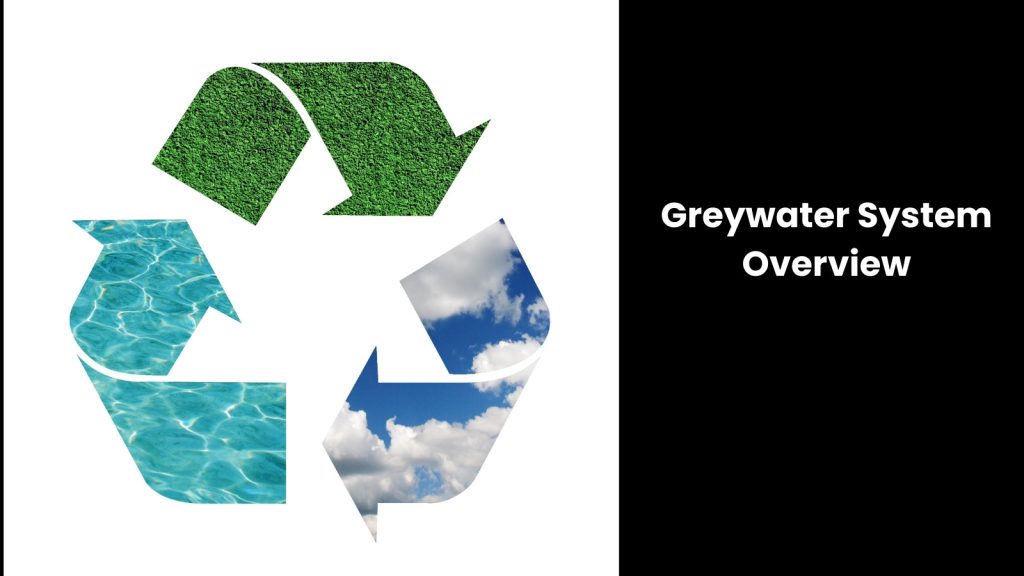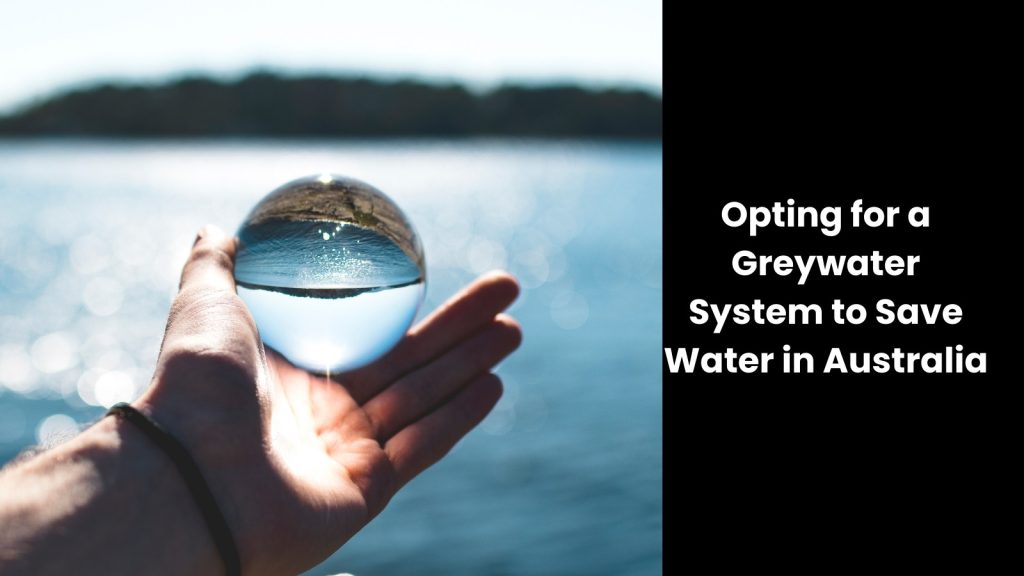Saving water is the biggest challenge the contemporary world is facing at the moment. Due to different and unpredictable weather patterns, it is a top necessity for the countries to collect water when they can and treat it for future purposes. Australia is no exception in this scenario. Although recycling water is a mega-scale project that is spread across the whole country, the authorities tend to focus on recycling domestically used water as well. This is where the Greywater System comes in.
In this article, we mainly focus on Greywater Systems in Australia and their key benefits.
Greywater System Overview

- A greywater system collects and filters water from sinks, showers, and laundry machines for reuse in activities like garden irrigation or toilet flushing, reducing the demand for fresh water.
- It is gaining popularity worldwide due to its environmental benefits and water-saving potential. In today’s world, where water scarcity and sustainability are major concerns, greywater systems offer a practical solution by recycling water that would otherwise be wasted.
- Not to mention that they help address challenges such as drought resilience by providing an alternative water source for outdoor use during dry periods.
- You know, regulatory frameworks in many regions also encourage their adoption, ensuring safe and effective implementation. However, certain challenges, like system complexity and maintenance requirements, can deter widespread adoption.
- This is why advances in technology have simplified these systems. It makes them more accessible and efficient.
- As you can see, Greywater systems represent a sustainable approach to water management. Not only does it promote conservation, but it also reduces environmental impact in residential and commercial settings alike, providing the best answer to water challenges in Australia.
Top 5 Benefits of the Greywater System

Helping with Water Conservation
Why is water conservation such a challenge in Australia, and how can greywater systems help tackle this issue?
It is a commonly known fact that Australia faces water scarcity issues due to its dry climate and irregular rainfall patterns. This scarcity is exacerbated by factors like population growth and urbanisation, which put pressure on available water resources.
It is crucial to conserve water in Australia as it ensures there is enough for essential needs like drinking, sanitation, and agriculture, especially during droughts.
This is where Greywater systems play a vital role in water conservation by recycling water from showers, baths, and washing machines. Instead of letting this water go to waste, greywater systems treat it for reuse in activities like watering gardens and flushing toilets.
This reduces the demand for fresh, potable water from main supplies, which is expensive to treat and distribute. As it can divert greywater for non-potable purposes, households can significantly decrease their water usage and lower their water bills.
It is evident that new technologies have simplified these systems, making them more efficient and easier to manage over time.
Reducing Water Bills
This is quite a challenging type of bill in Australia due to factors like increasing population, urbanisation, and water scarcity exacerbated by climate conditions. The need to reduce water bills in Australia is crucial to alleviate financial burdens on households and ensure equitable access to affordable water services.
If it is possible to reuse greywater, which includes water from showers, baths, and washing machines, households can lessen their dependence on mains water supply for non-potable activities such as watering gardens and flushing toilets. This reduction in demand for treated, potable water translates directly into lower water bills for consumers.
Did you know that Greywater systems function by diverting wastewater from these sources through filtration and treatment processes? Yes, this makes it suitable for reuse in specific household applications.
This process not only conserves potable water but also reduces the volume of wastewater needing treatment and disposal, which can further decrease utility costs.
According to the Australian authorities, new technological implementations have made these systems more efficient and user-friendly, contributing to their increasing adoption as a sustainable solution for water management in Australia.
Embracing greywater systems not only helps in reducing water bills but also promotes responsible water usage, contributing positively to environmental conservation efforts.
Environmental Impact
Australia’s vast size, diverse ecosystems, and sensitivity to climate change are the main reasons why it has become difficult to reduce the environmental impact. The country’s reliance on natural resources for economic growth, coupled with population growth and urbanisation, intensifies pressures on ecosystems and water resources.
But, on the other hand, it is important to mitigate environmental impacts to preserve biodiversity, maintain ecosystem services, and combat climate change effects like droughts and wildfires.
How can this be done?
Greywater systems are known as a key player in reducing environmental impact by recycling water from household sources such as showers, baths, and washing machines.
Here’s how it works: Greywater is first collected and diverted from these sources using pipes and valves. It then undergoes filtration and treatment processes to remove impurities and contaminants. Once treated, this water is suitable for non-potable uses such as watering gardens and flushing toilets, reducing the demand for freshwater from conventional sources.
Since it is possible to reuse greywater, households decrease the amount of water drawn from rivers and reservoirs, conserving natural habitats and supporting ecosystem health. Moreover, by reducing the need to treat and distribute freshwater, greywater systems lower the energy consumption associated with water utilities. This surely reduces greenhouse gas emissions and lessens the carbon footprint of water usage in Australia.
Improving Soil Health
It is a widely known fact that Australia faces challenges like soil erosion. This degradation occurs from intensive farming and desertification, exacerbated by its arid climate and fragile ecosystems. Battling all these challenges, preserving soil health is critical to sustaining agricultural productivity, supporting biodiversity, and maintaining ecosystem resilience against climate change impacts.
Greywater systems are good at improving soil health by recycling water from showers, baths, and laundry machines, as we mentioned above. The mechanism goes like this.
Greywater is first collected and treated to remove contaminants like soap residues and pathogens using filters and disinfection processes. Once treated, this nutrient-rich water can be used for irrigation in gardens and landscapes. When applied to soil, the nutrients in greywater, such as nitrogen and phosphorus, enrich the soil, enhancing fertility and promoting healthier plant growth. This supports robust vegetation, reduces erosion risks, and improves soil structure over time.
If they can incorporate greywater into irrigation practices, farmers can reduce the need for chemical fertilisers and minimise nutrient runoff into waterways, which can harm aquatic ecosystems.
This sustainable approach not only conserves water but also nurtures soil health, contributing to long-term agricultural sustainability and environmental stewardship in Australia.
Drought Resilience
In Australia, there is much news circling potential droughts.
Facing drought is a significant challenge in Australia, mainly because of its variable climate and limited freshwater resources. The country often experiences prolonged dry periods, intensifying water scarcity and impacting agriculture, ecosystems, and communities.
This is why preventing droughts is a top priority to ensure water security for drinking, sanitation, and food production, safeguarding economic stability and environmental health.
When it comes to the Greywater system, it can enhance drought resilience by recycling water from household sources like showers, baths, and washing machines.
Greywater is collected and treated to remove impurities using filtration and disinfection processes. Once treated, this water is reused for non-potable purposes, such as watering gardens and maintaining green spaces. During droughts, when mains water supplies are limited or restricted, greywater systems provide a reliable alternative source of water. This reduces the strain on municipal water resources and helps households sustain outdoor vegetation without completely relying on limited freshwater supplies.
It is an outstanding practice to incorporate greywater into irrigation practices. If this is done correctly, people can conserve precious potable water for essential indoor uses while supporting outdoor landscapes. This sustainable water management approach not only mitigates the impact of droughts but also promotes water conservation and environmental resilience.
Opting for a Greywater System to Save Water in Australia

You know that implementing the Greywater System can be done both domestically and commercially. When you incorporate this for commercial purposes, make sure you purchase a Greywater system that has embedded tools like Predictive Analytics, sensors, and predictive maintenance to do this more precisely. Collaborating with a reputed supplier will take your reliability worries away, for sure.







